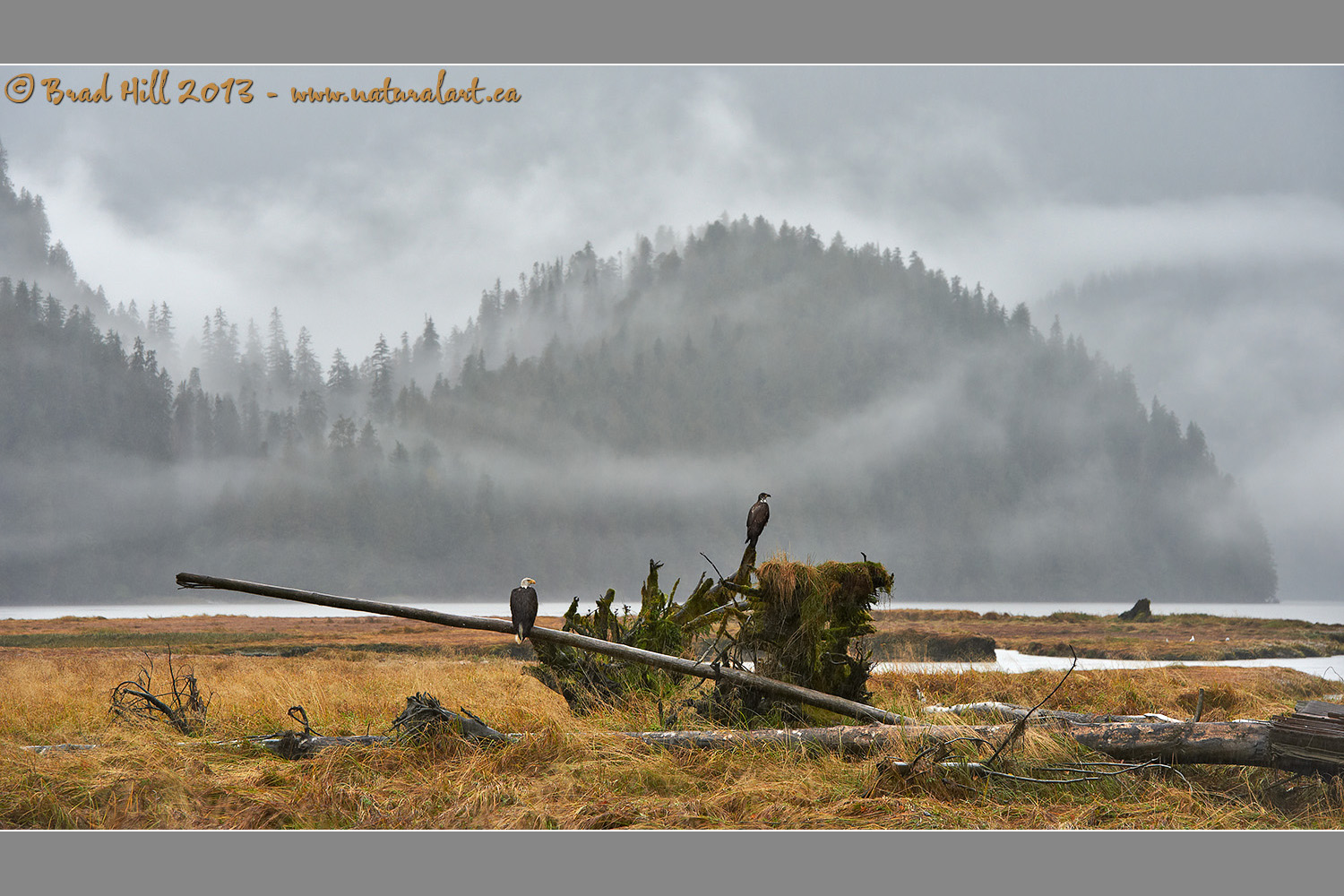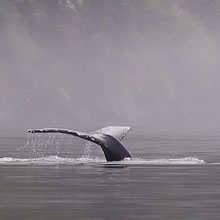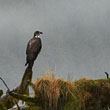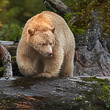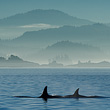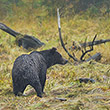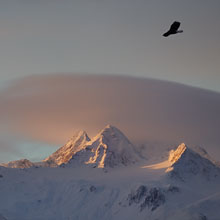Availability: Limited Edition Print - info coming soon!
In the Field
Eagles in the Mist. Great Bear Rainforest (central BC coast), BC, Canada. September 30, 2012.
It's hard to debate the name that has been bestowed upon British Columbia's central and northern coast - the Great Bear Rainforest. It is definitely a rainforest. It is definitely large and definitely spectacular (or "Great"). And, black bears, grizzly bears and Spirit Bears are definitely in abundance and are quite prominent. But one thing I dislike about that name is that the region it describes is about SO MUCH more than just bears. The scenery and vistas are breathtaking. Eagles and dozens and dozens of bird species abound. The howls of coastal wolves fill the night. Humpback and Killer Whales patrol the inlets. In August of 2011 National Geographic magazine called it "The Wildest Place in North America". I haven't been to every wild place in North America, but who am I to argue with them? ;-)
What I personally like about this shot is that it's so darned typical of what you see every time you look in a different direction within the Great Bear Rainforest. I shot this while leading a photo tour in the Great Bear Rainforest. I was accompanied by 6 other photographers at the time. No one else even raised a camera at this scene. Why? Well, they were focused on something else - just off the left side of the frame shown here a female grizzly and her 3-year old cub were playfully sparring! Unfortunately they were in deep grass and getting a clear shot at them wasn't possible. So I opted to pass on the bears and "settle" with this scene! For some reason I didn't feel particularly short-changed!
Animalscape* shots are quite hard to effectively present on the web - even in images up to 1200 pixels wide or high. This is simply because at small sizes so much of the rich detail that makes the shot appealing is lost. For this reason, I'm giving you the option to download and view a larger ("half resolution" or 2400 pixel wide) version of the image:
Download 2400 pixel version (JPEG; 1.1 MB)
ADDITIONAL NOTES:
1. This image - in all resolutions - is protected by copyright. I'm fine with personal uses of it (including use as desktop backgrounds or screensavers on your own computer), but unauthorized commercial use of the image is prohibited by law. Thanks in advance for respecting my copyright!
2. Like all wildlife photographs on this website, this image was captured following the strict ethical guidelines described in The Wildlife FIRST! Principles of Photographer Conduct. I encourage all wildlife photographers to always put the welfare of their subjects above the value of their photographs.
3. This image was captured during one of my "Into the Great Bear Rainforest" photo tours during the autumn of 2012. Each year I offer trips into two different parts of the Great Bear Rainforest as well as one to photograph aquatic mammals and oceanscapes near the northern tip of Vancouver Island. And, in selected years, I also offer photo tours to locations to capture other highly sought-after subjects, such as various owl species of the boreal forest and wildlife of Canada's Arctic. Details about these trips can be found on the Photo Tours page of this website.
*4. For a more detailed discussion of the image types I call animalscapes and enviroscapes (and the subtle distinctions between them), just go here...
Behind the Camera
Eagles in the Mist. Great Bear Rainforest (central BC coast), BC, Canada. September 30, 2012.
Digital Capture; Compressed RAW (NEF) 14-bit format; ISO 720.
Nikon D4 paired with Nikkor 70-200mm f2.8 VRII @ 150mm - hand held. VR on and in normal mode.
1/160s @ f4; -0.33 stop compensation from matrix-metered exposure setting.
At the Computer
Eagles in the Mist. Great Bear Rainforest (central BC coast), BC, Canada. September 30, 2012.
RAW Conversion to 16-bit TIFF, including first-pass/capture sharpening using Capture One Pro Version 6. Three raw variants (processed from raw) differing by a total of 0.67 stops in exposure.
Further digital corrections on resulting 16-bit TIFF files using Adobe's Photoshop CS6 and Light Craft's Lightzone. Photoshop adjustments included compositing the raw conversion exposure variants, selective minor tweaks to exposure, selective colour saturation and desaturation, and selective sharpening for web output. Final tone tweaking performed using tonemapper/re-light tool in Lightzone.
Conservation
Eagles in the Mist. Great Bear Rainforest (central BC coast), BC, Canada. September 30, 2012.
Ten percent of the revenue generated by this image will be donated to Raincoast.
Species Status in Canada*: This species is not designated as at risk. The Bald Eagle was listed as "Endangered" in the contiguous US states from 1967 to 1995. In 1995 it was downlisted to "Threatened". On June 28, 2007 Bald Eagles were removed from the list of endangered and threatened species - a true American conservation success story.
The Bald Eagle (Haliaeetus leucocephalus) is a very large bird of prey with broad wings. Adults possess characteristic white ("bald") heads. It takes Bald Eagles a full five years to attain their characteristic adult plumage (including their nearly pure white head and tail). In the years prior to the development of their adult plumage they are easy to confuse with Golden Eagles. Being very broad-winged Bald Eagles are able to use an energy-efficient flapping-soaring style of flight. While many people like to think of the Bald Eagle as a fierce hunter, in reality they hunt only as a last resort. More commonly they scavenge for their prey. Additionally, they often klepto-parasitize other weaker species such as Osprey, commonly stealing the other species hard-earned prey items. The Bald Eagle is, of course, the national emblem of the United States (Benjamin Franklin argued against this - his preference was for the Wild Turkey).
This Bald Eagle was photographed in the heart of the Great Bear Rainforest. While Bald Eagles are currently not under the threat of extinction, they do, of course, require suitable breeding habitat to continue to thrive. The Raincoast Conservation Society (and Foundation) is an effective and efficient organization that has been fighting for protection of this unique habitat. If you are looking for a meaningful way to contribute to the conservation of this amazing ecosystem, Raincoast will provide maximal "bang" for your conservation dollars.
*as determined by COSEWIC: The Committee on the Status of Endangered Wildlife in Canada













